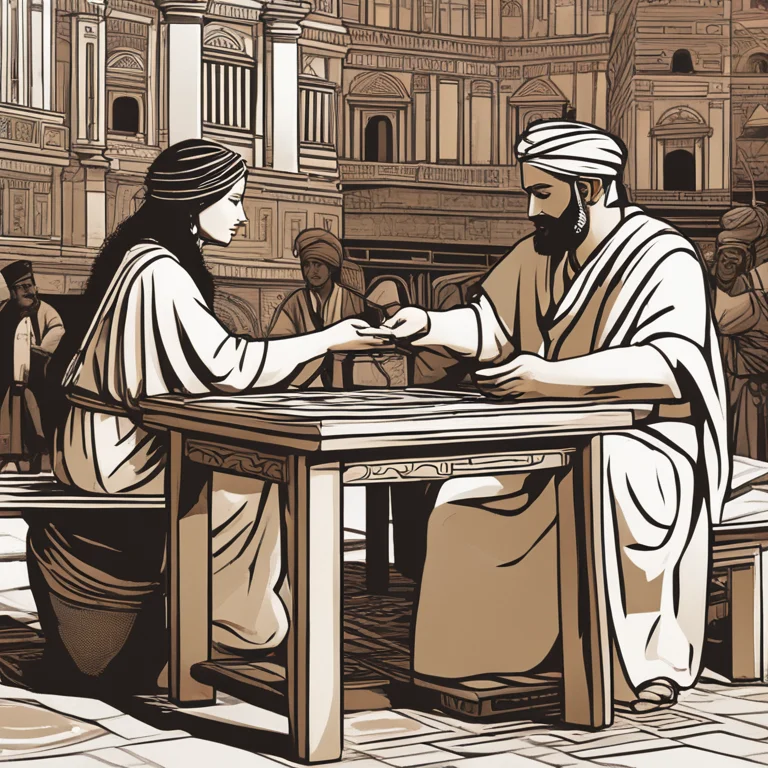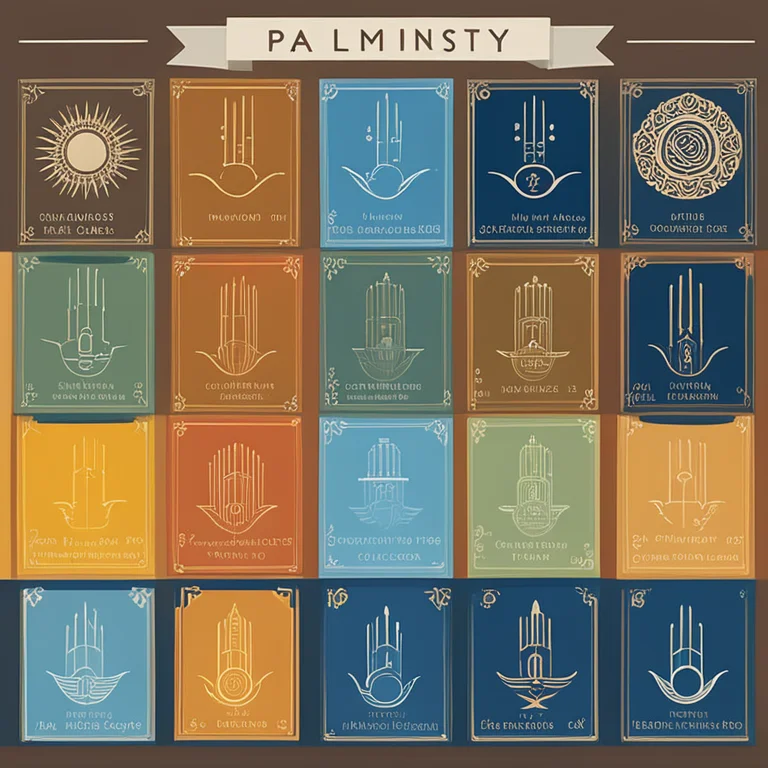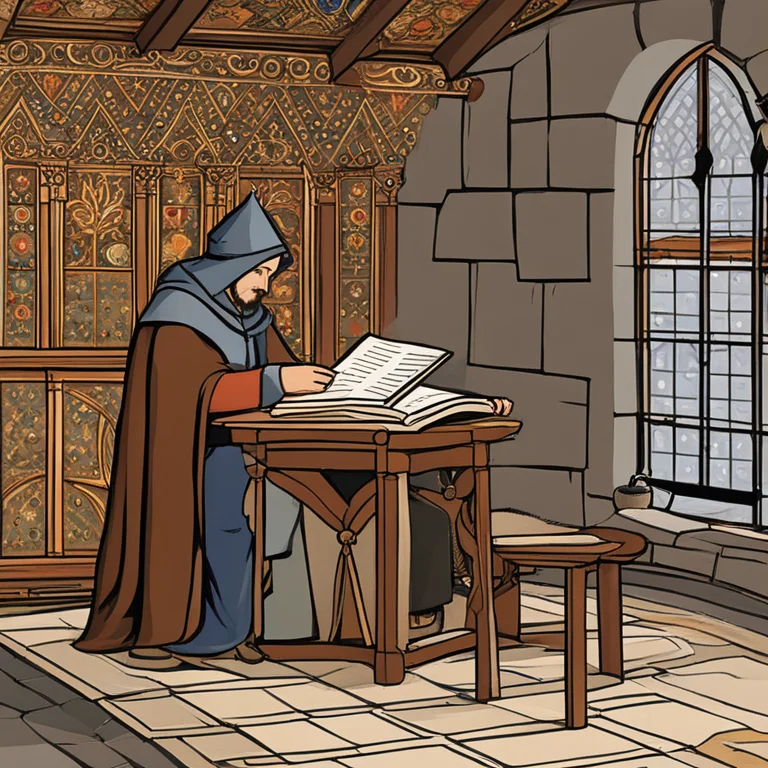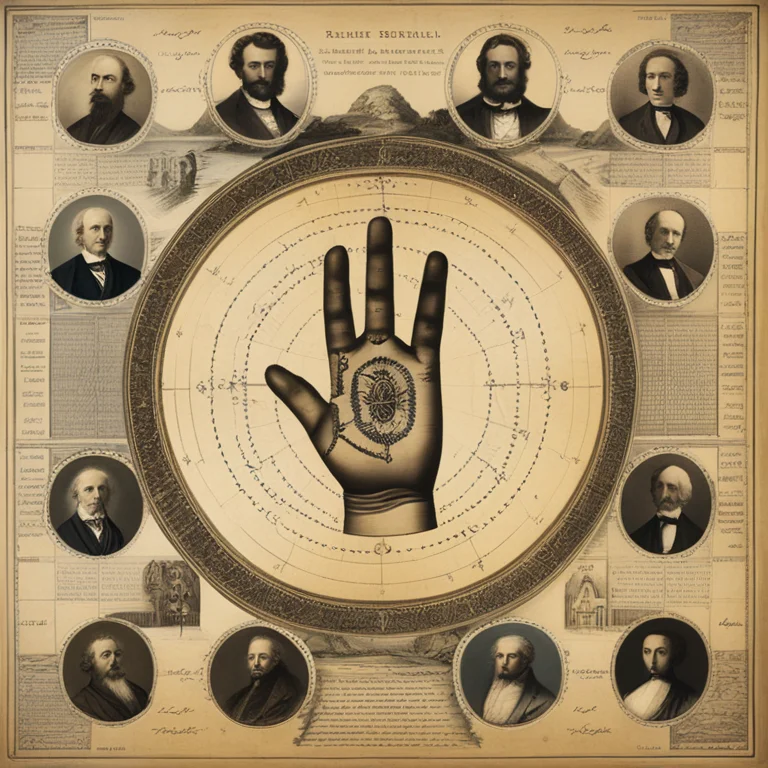
How Palmistry Began: A Historical Insight
Delve into the ancient roots of palmistry and discover how this mystical practice has traversed cultures and centuries to reach us today.
article by Nora Pennington
The Dawn of Palm Reading
Since ancient times, human beings have sought to understand themselves and their place in the cosmos, looking towards various forms of divination for answers. One of the oldest among these is palmistry, also known as chiromancy or palm reading. This practice, which involves studying the lines and features of the hands to divine one's character and future, is thought to have originated over 5,000 years ago. The precise beginnings of palmistry are shrouded in mystery, with indications of its use found in diverse cultures such as India, China, Tibet, Persia, Egypt, and ancient Sumer.

Palmistry's Journey Through Cultures
Palmistry's widespread prevalence in history suggests it was considered a universal form of knowledge and insight. In ancient India, it was regarded as a branch of the Vedas, the sacred texts, under the name 'Hasta Samudrika Shastra'. China's contributions to palmistry are also essential, especially considering their other practices like acupuncture and reflexology, which connect the body's lines and points to one's health and fortune. The Greeks, under the influence of figures such as Anaxagoras and Aristotle, studied palmistry, helping to spread its practice throughout the classical world.

Advancements in Medieval Palmistry
During the medieval period, palmistry was intertwined with astrology and was practiced by various scholars and magicians. Its practice ebbed and flowed with the changing tides of societal acceptance, particularly during witch hunts and periods of superstition crackdown. Nonetheless, major written works from this era, including the famous 'The Chiromancie of Johannes Hartlieb', helped standardize and preserve the knowledge of palmistry, leading to a revival of interest in the Renaissance period.

Integration with Science and Spirituality
The 19th century marked a significant era for palmistry as it attempted to align with emerging scientific thoughts. Figures like Captain Casimir Stanislas D'Arpentigny and Adrien Adolphe Desbarrolles are credited with giving palmistry a more systematic approach, merging empirical observations with metaphysical aspects. The practice began to integrate with other esoteric disciplines such as Kabbalah, astrology, and psychology, which led to a more nuanced understanding of its potential uses and interpretations.

Contemporary Palmistry
In the 20th and 21st centuries, palmistry continued to evolve, incorporating new age spirituality and psychological analysis. Today, palmistry doesn't simply forecast one's future but aims to reveal aspects of personality, potential life paths, and choices. Although it might not be accepted by mainstream science, palmistry still holds a significant place in popular culture and is practiced by enthusiasts worldwide who appreciate its symbolism and introspective value. As we look beyond 2024, palmistry adapts to the digital age with online readings and apps, yet its essence remains rooted in its mysterious past.
The Lasting Legacy of Palmistry
Palmistry's lasting allure lies in its rich story and the human desire to seek purpose and understand destiny. Whether regarded as a serious discipline or a subject of curiosity and entertainment, palmistry's journey through history continues to captivate and intrigue. As long as individuals look to their hands for answers, the legacy of this ancient art will endure, forever a part of humanity's quest for wisdom.
Published: 1/11/2024
Modified: 1/12/2024
More predictions
Come back here soon to learn more about yourself and your future


The Basics of Palm Reading: A Beginner's Guide
Discover the basics of palm reading in this comprehensive guide aimed at beginners interested in the ancient practice of palmistry.


The Secrets of the Jupiter Mount & Palmistry
Discover the significance of the Jupiter Mount in palm reading and how it reflects your leadership and ambition.


The Secrets of Palmistry: Interpreting Hand Reading Lines
Delve into the fascinating world of palmistry and discover what your hand reading lines reveal about your destiny, personality, and future.